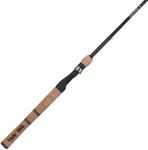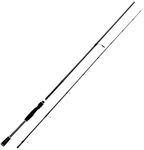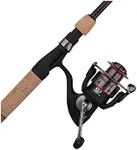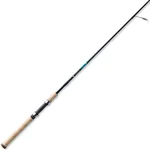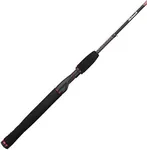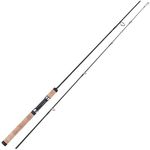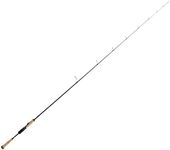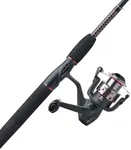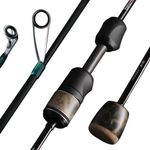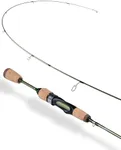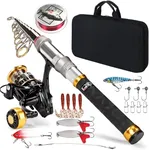Buying Guide for the Best Ultra Light Fishing Rods
Choosing the right ultra-light fishing rod can significantly enhance your fishing experience, especially if you're targeting smaller fish or fishing in streams and ponds. Ultra-light rods are designed to be sensitive and lightweight, making them perfect for detecting subtle bites and providing a more enjoyable fishing experience. When selecting an ultra-light fishing rod, consider the following key specifications to ensure you get the best fit for your needs.LengthThe length of an ultra-light fishing rod is crucial as it affects casting distance and accuracy. Rods typically range from 4 to 7 feet. Shorter rods (4-5 feet) are ideal for tight spaces and precise casting, making them perfect for small streams and ponds. Longer rods (6-7 feet) offer better casting distance and are suitable for larger bodies of water. Choose a length based on where you'll be fishing and the type of fish you're targeting.
PowerPower refers to the rod's ability to handle different weights and sizes of fish. Ultra-light rods are designed for small fish, such as panfish and trout. They have a light power rating, which means they bend easily and provide a delicate touch. If you're targeting very small fish, an ultra-light power rod is ideal. For slightly larger fish, you might consider a light power rod. Match the power rating to the size of fish you expect to catch.
ActionAction describes how much and where the rod bends when pressure is applied. Ultra-light rods typically have fast or ultra-fast action, meaning they bend mostly at the tip. This provides quick hook sets and better sensitivity, which is important for detecting light bites. If you prefer a more flexible rod that bends throughout its length, look for a moderate action rod. Choose the action based on your fishing style and the type of lures you plan to use.
MaterialThe material of the rod affects its weight, sensitivity, and durability. Common materials include graphite, fiberglass, and composite blends. Graphite rods are lightweight and highly sensitive, making them perfect for detecting subtle bites. Fiberglass rods are more durable and flexible but slightly heavier. Composite rods offer a balance between sensitivity and durability. Consider the material based on your preference for weight and sensitivity.
HandleThe handle of the rod impacts comfort and control. Handles are typically made from cork or EVA foam. Cork handles are lightweight, comfortable, and provide a good grip, even when wet. EVA foam handles are durable and offer a firm grip. The length and design of the handle also matter; longer handles provide better leverage for casting and fighting fish, while shorter handles are easier to maneuver. Choose a handle that feels comfortable in your hand and suits your fishing style.
GuidesGuides are the rings along the rod that direct the fishing line. Quality guides reduce friction and improve casting performance. Look for rods with stainless steel or ceramic guides, as they are durable and smooth. The number of guides can also affect performance; more guides generally mean better line control and casting accuracy. Ensure the guides are well-aligned and securely attached to the rod.
